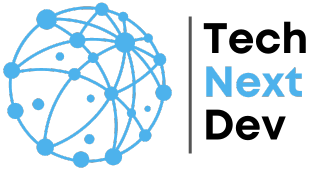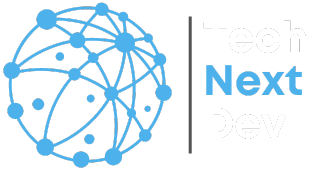Introduction
In today’s fast-evolving digital landscape, new terms and technologies constantly emerge, shaping how we interact with the world and each other. One such term that has begun to gain attention is “rarecord.” Although not yet mainstream, “rarecord” is a concept that holds significant potential across various industries, particularly in digital media, blockchain, and record-keeping. This article will dive into the meaning, implications, and potential applications of rarecord, exploring how it might revolutionize the way we think about records and data preservation.
The Etymology of Rarecord
The term “rarecord” is a portmanteau of “rare” and “record.” The word “rare” implies something that is uncommon, unique, or difficult to find, while “record” refers to documentation or a piece of information that is preserved for future reference. Together, the term suggests a record that is not only preserved but also possesses a certain level of rarity or exclusivity. This rarity is not just in the sense of scarcity but also in terms of the uniqueness and immutability of the record itself.
Understanding the Concept of Rarecord
A. The Evolution of Record-Keeping
Record-keeping has been an essential part of human civilization for millennia. From ancient clay tablets and papyrus scrolls to modern digital databases, the methods of recording and preserving information have evolved dramatically. In the digital age, records have become easier to create, store, and access. However, this convenience comes with challenges, such as data security, authenticity, and long-term preservation.
B. Digital Records vs. Rarecords
Traditional digital records, while convenient, are susceptible to various risks. They can be duplicated, altered, or even erased without leaving a trace. Rarecords, on the other hand, are designed to overcome these challenges by utilizing blockchain technology and cryptographic methods. A rarecord is not just a digital file; it is a secure, immutable, and unique digital entity that can be verified and preserved indefinitely.
Applications of Rarecord
The potential applications of rarecord are vast, spanning across multiple industries and use cases. Here are some of the most promising areas where rarecords could make a significant impact.
Rarecord in Blockchain Technology
One of the most promising applications of rarecords is in the realm of blockchain technology. Blockchain is a decentralized ledger system that records transactions across a network of computers. Each transaction is verified and recorded in a block, which is then added to a chain of previous blocks, creating a secure and immutable record. Rarecords can be created and stored on a blockchain, ensuring their authenticity and permanence. This could revolutionize how we store and manage important records, from financial transactions to legal documents.
Media and Entertainment Industry
In the media and entertainment industry, rarecords could be used to create and manage unique digital assets, such as music tracks, movies, and artwork. For instance, a rarecord could be created for a particular music album, ensuring that it remains authentic and cannot be duplicated or pirated. This would not only protect the rights of artists and creators but also add value to their work by making it rare and collectible.
Legal and Compliance Use Cases
The legal industry relies heavily on the integrity and authenticity of records. Rarecords could be used to create tamper-proof legal documents, contracts, and compliance records. This would ensure that these critical documents remain secure, verifiable, and unaltered over time. Moreover, rarecords could be easily accessed and verified by authorized parties, streamlining legal processes and reducing the risk of fraud.
Art and Collectibles
The art and collectibles market is another area where rarecords could have a transformative impact. Rarecords could be used to create digital certificates of authenticity for physical artworks, ensuring that they are unique and verifiable. Additionally, digital artworks themselves could be turned into rarecords, creating a new category of digital collectibles that are secure, unique, and valuable.
The Technology Behind Rarecord
Blockchain and Rarecord
Blockchain technology is the backbone of rarecords. By leveraging the decentralized and immutable nature of blockchain, rarecords can be created and stored in a way that ensures their authenticity and longevity. Each rarecord is linked to a specific block on the blockchain, making it virtually impossible to alter or duplicate without detection.
Cryptography and Data Security
Cryptography plays a crucial role in the creation and maintenance of rarecords. By using advanced cryptographic algorithms, rarecords can be encrypted and secured against unauthorized access or tampering. This ensures that only authorized parties can access and verify the rarecord, adding an extra layer of security to the data.
Rarecord vs. Traditional Records
Longevity and Preservation
One of the key advantages of rarecords over traditional records is their longevity. Traditional digital records are often stored on physical media, such as hard drives or servers, which can degrade over time or become obsolete. Rarecords, being stored on a blockchain, are not subject to these risks. They are preserved indefinitely, as long as the blockchain itself remains operational.
Authenticity and Verification
Authenticity is another area where rarecord excel. Traditional records can be easily duplicated or forged, making it difficult to verify their authenticity. Rarecords, however, are unique and tamper-proof, thanks to the cryptographic methods used in their creation. This makes them much more reliable for verifying the authenticity of important documents or assets.
Accessibility and Decentralization
Traditional records are often stored in centralized locations, such as databases or servers, which can be vulnerable to hacking, corruption, or loss. Rarecords, on the other hand, are stored on a decentralized blockchain, making them much more resilient to such risks. Additionally, because the blockchain is accessible to anyone with an internet connection, rarecords can be accessed and verified from anywhere in the world.
Challenges and Limitations
While the concept of rarecord is promising, it is not without its challenges and limitations. Here are some of the key issues that need to be addressed for rarecords to reach their full potential.
Technological Barriers
The creation and maintenance of rarecords require advanced technology, particularly in the areas of blockchain and cryptography. While these technologies are rapidly evolving, they are still relatively new and may not be accessible to everyone. Additionally, the scalability of blockchain technology is still a concern, as the size of the blockchain grows with each new block added.
Legal and Regulatory Issues
As with any new technology, rarecords will need to navigate a complex landscape of legal and regulatory issues. For instance, there are questions about the legal status of rarecords, particularly in relation to traditional records. Will rarecords be recognized as legally binding documents? How will they be regulated? These are questions that will need to be addressed as the technology evolves.
Adoption and Awareness
Finally, for rarecords to become mainstream, there needs to be greater awareness and adoption of the technology. Many people are still unfamiliar with blockchain and cryptography, let alone the concept of rarecord. Educating the public and businesses about the benefits and potential of rarecords will be crucial for their widespread adoption.
The Future of Rarecord
The future of rarecord is full of possibilities. As technology continues to evolve, so too will the applications and capabilities of rarecords. Here are some potential developments and uses for rarecords in the coming years.
Potential Developments
One potential development is the integration of artificial intelligence (AI) with rarecords. AI could be used to analyze and manage rarecords, making it easier to search, verify, and utilize them. Additionally, as blockchain technology becomes more scalable, we could see rarecords being used for a wider range of applications, from personal identity management to global supply chain tracking.
Rarecord in Everyday Life
In the future, rarecords could become a part of everyday life. For instance, individuals could create rarecords for important personal documents, such as birth certificates, passports, or medical records, ensuring that these documents are secure, verifiable, and accessible from anywhere. Businesses could use rarecords to manage contracts, transactions, and other critical data, reducing the risk of fraud and improving efficiency.
Final Thoughts
In conclusion, rarecord represents a significant advancement in the way we create, store, and manage digital records. By leveraging blockchain technology and cryptography, rarecords offer a secure, immutable, and unique way to preserve information. While there are still challenges to be addressed, the potential applications of rarecords are vast and varied, spanning across multiple industries and use cases.
FAQs
Q1: What is a rarecord?
A: A rarecord is a digital record that is created, stored, and maintained using blockchain and cryptographic technologies to ensure its rarity, authenticity, and longevity.
Q2: How is a rarecord different from a traditional digital record?
A: Unlike traditional digital records, which can be easily duplicated or altered, a rarecord is unique, tamper-proof, and stored on a blockchain, making it more secure and reliable.
Q3: What are some potential applications of rarecord?
A: Rarecords can be used in various industries, including blockchain technology, media and entertainment, legal and compliance, and art and collectibles.
Q4: What are the challenges associated with rarecord?
A: Some challenges include technological barriers, legal and regulatory issues, and the need for greater awareness and adoption of the technology.
Q5: How does blockchain technology support rarecords?
A: Blockchain provides a decentralized and immutable ledger for storing rarecords, ensuring their authenticity and longevity by making them resistant to tampering and unauthorized access.



